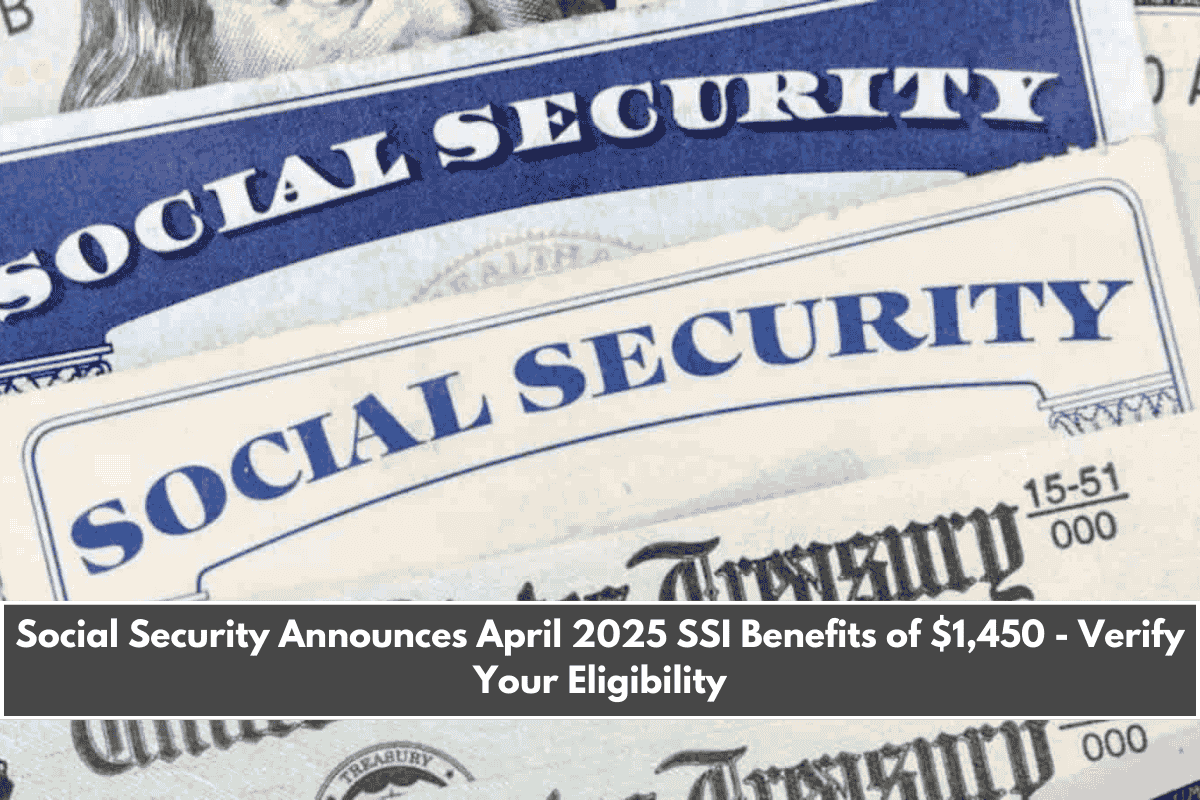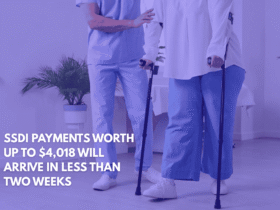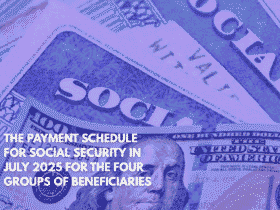The Social Security Administration (SSA) has officially announced that eligible recipients of Supplemental Security Income (SSI) will receive up to $1,450 starting April 1, 2025. This is part of the monthly benefits program aimed at helping low-income individuals, seniors, and people with disabilities.
Navigating SSI eligibility, payment amounts, and changes for 2025 can be confusing, so this guide breaks everything down in simple terms. Whether you’re a new recipient, helping a loved one, or just seeking the latest updates, this article provides the key details about SSI in 2025.
Key Details of SSI Payouts for April 2025
| Feature | Details |
|---|---|
| Payment Date | April 1, 2025 |
| Maximum Benefit | $1,450 (for eligible couples) |
| Single Individual | Up to $943/month |
| Essential Person | $472/month |
| COLA Increase | 3.2% in 2025 (Source: SSA COLA Fact Sheet) |
| Who Qualifies | Low-income seniors, people with disabilities, blind individuals |
| Resource Limits | $2,000 for individuals, $3,000 for couples |
| Apply at | ssa.gov |
These updates reflect the SSA’s ongoing efforts to align benefits with inflation and better support those in need. Whether you’re new to SSI or assisting someone, understanding the full picture will help ensure you receive the maximum amount you’re entitled to.
What Is SSI and Why Does It Matter?
Supplemental Security Income (SSI) is a federal assistance program managed by the Social Security Administration (SSA) that provides monthly payments to people with limited income and resources. It’s primarily designed to help:
- Seniors (age 65+)
- Blind individuals
- People with disabilities
Unlike other Social Security benefits (such as retirement or disability benefits), SSI is need-based. Eligibility is determined by your income, assets, and living situation, not your work history. This makes SSI accessible to individuals who might not have a long work history, including those who become disabled early in life.
SSI helps prevent extreme poverty among vulnerable populations, with many recipients relying on it as their sole source of income.
How Much Will You Get in April 2025?
The maximum federal SSI payments for 2025 are:
- $943/month for an eligible individual
- $1,450/month for an eligible couple
- $472/month for an essential person (someone providing in-home care)
In some states, recipients may receive more if their state offers a State Supplementary Payment (SSP). States like California, New York, and Massachusetts add extra funds to your monthly SSI check. You can check if your state offers an SSP on the SSA website.
Why the $1,450 Figure for Some?
The $1,450 figure reflects the combined federal and state benefits for eligible couples living in states with high state supplements. However, not everyone will receive this exact amount. Your actual payment depends on:
- Your living situation
- Other sources of income
- Whether you live alone or with others
Additionally, those living in licensed care facilities or group homes may receive different amounts based on state-specific rules.
Who Qualifies for the April 2025 SSI Payment?
To qualify for SSI, you must meet specific income, resource, age, and disability criteria:
1. Age or Disability
- Be 65 or older, or
- Be blind (vision less than 20/200), or
- Have a disability that prevents substantial gainful activity (SGA) and is expected to last at least 12 months or result in death.
2. Income Limits
- Earned income (from work) must be below certain thresholds.
- Unearned income (such as Social Security, pensions, or unemployment) is also counted.
- Some types of income, such as SNAP benefits or certain housing assistance, may not count against eligibility.
3. Resource Limits
- $2,000 for individuals
- $3,000 for couples
Resources include cash, bank accounts, stocks, and bonds but do not include your home or one vehicle. Certain personal items and burial plots are also excluded.
4. Residency & Citizenship
- You must be a U.S. citizen or qualified non-citizen.
- You must live in the U.S., D.C., or the Northern Mariana Islands. U.S. residents living abroad typically do not qualify.
What Changed in 2025?
There are some important updates for SSI in 2025:
- 3.2% COLA Increase: A cost-of-living adjustment (COLA) increase ensures that benefits keep up with inflation.
- In-Kind Support Changes: As of September 2025, food assistance from friends or family will no longer count against your SSI eligibility (Source: SSA News).
- Streamlined Application Process: The SSA now allows more online applications and virtual appointments for initial filings.
These updates aim to simplify the application process and help more individuals qualify for benefits.
How to Apply for SSI
Applying for SSI is easy with these simple steps:
Step 1: Gather Required Documents
- Social Security number
- Proof of age (birth certificate)
- Proof of income and resources (bank statements, pay stubs)
- Medical records (if applying for disability)
- Immigration documents (if not a U.S. citizen)
Step 2: Apply Online or In-Person
- Apply online at ssa.gov/ssi or
- Call 1-800-772-1213 to schedule an appointment.
- You can also apply in-person at your nearest Social Security office.
Step 3: Attend an Interview
- The SSA may require an interview to confirm your eligibility. Be prepared to answer questions about your finances, household members, and health conditions.
Step 4: Wait for Decision
- Decisions typically take 3 to 6 months, depending on your case. Some disability cases may take longer due to medical reviews.
Step 5: Receive Your Payment
- If approved, you will receive SSI benefits via direct deposit or a government-issued debit card.
Practical Tips to Maximize Your Benefits
- Track Your Income: Changes in your income can affect your SSI eligibility and payment amount.
- Report Changes Promptly: Notify the SSA immediately if your address, income, or household changes.
- Explore State Supplements: Check if your state offers additional funds on top of your federal SSI.
- Utilize Work Incentives: Programs like Ticket to Work can help you earn income without losing SSI benefits.
- Review Your Annual Notice: The SSA sends a summary of your benefits each year. Always review it for accuracy.
- Use a Benefits Counselor: Organizations like Benefits.gov or local nonprofits can help guide you through the SSI process.











Leave a Reply